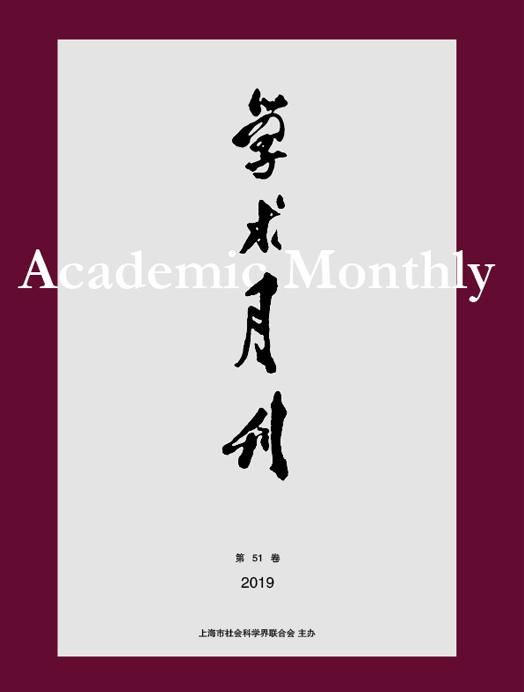Citation:
Wenjiao YANG, Jin SUN, Jianxin GUO and Chuanchao WANG. The Origin and Dispersal of Indo-European Languages from the Perspectives of Linguistics, Archeology and Genetics[J]. Academic Monthly, 2021, 53(5): 175-185.

The Origin and Dispersal of Indo-European Languages from the Perspectives of Linguistics, Archeology and Genetics
-
Abstract
The research on the origin and dispersal of Indo-European languages has gone through nearly a hundred years since it was first proposed. At present, the academic circles mainly focus on the Kurgan hypothesis and Anatolian hypothesis. The research on this topic is abundant yet complex at home and abroad.There is no consensus on its controversial origin and diffusion path. This paper reviews the main hypotheses on the origin and diffusion of Indo-European languages, and compares the research achievements and limitations of scholars from the perspectives of archaeology, linguistics and genetics. We infer the Indo-European languages originated in a region from the south of the Caucasus Mountains to Anatolia, then spread to the Eastern Steppe by early European farmers, and the nomads associated with Yamnaya culture in the Eastern Steppe in early and middle Bronze Age spread the languages to Europe, Northwest China (Tocharian) and South Asia.
-

-
References
-
Access
-
-
[1]
Pengfei SHENG
, Simei ZHU
. The Theory and Approach of Stable Isotope Analysis for Past Diets and Its Application to Historical Research. Academic Monthly,
2022, 54(9): 201-211.
-
[2]
Jian XU
. Rethinking Triangle-rimed Animal-motif Mirrors: From Antiquarianism, Material History to Historical Archaeology. Academic Monthly,
2022, 54(3): 193-200.
-
[3]
Jing ZHANG
. The Influence of Benveniste’s Linguistic Thoughts on Roland Barthes’ “Writing” Theme. Academic Monthly,
2022, 54(9): 171-182.
-
[4]
. . Academic Monthly,
2016, 48(05): 162-172.
-
[5]
Jun QU
. Beyond the School of Xueheng. Academic Monthly,
2022, 54(3): 211-224.
-
[6]
Handing HONG
. Hermeneutics and the Eternity of Human Mind. Academic Monthly,
2018, 50(10): 5-16.
-
[7]
Jiaxin ZHOU
. Critical Economics and Philosophy of Praxis. Academic Monthly,
2019, 51(3): 17-25.
-
[8]
. . Academic Monthly,
2016, 48(08): 5-15.
-
[9]
. . Academic Monthly,
2017, 49(06): 5-11.
-
[10]
Jiyi GAO
. The Link Up of Confucian Classics and Calender Study. Academic Monthly,
2020, 52(1): 151-184.
-
[11]
. . Academic Monthly,
2016, 48(04): 11-19.
-
[12]
. . Academic Monthly,
2016, 48(07): 5-19.
-
[13]
Yibing ZHANG
, Fugong ZHANG
, Weiyu KONG
, Ting WU
. Economic Discourse and the Formation of Historical Materialism (Symposium). Academic Monthly,
2022, 54(6): 5-10.
-
[14]
Chusheng YE
, Zhaoke REN
. The Network Analysis in Economics and the Economic Research of the Network. Academic Monthly,
2019, 51(5): 39-46, 38.
-
[15]
CHENG Zhongying
. Benti Hermeneutics is Chinese Hermeneutics—— Also on the Difference and Fusion of Chinese and Western Hermeneutic Ideas. Academic Monthly,
2023, 55(10): 5-14.
-
[16]
Defeng WANG
, Minqi ZHANG
. On the Non-Historical Nature of Economics. Academic Monthly,
2021, 53(7): 22-35.
-
[17]
Dachun YANG
. From Phenomenology of Spirituality to Phenomenology of Materiality. Academic Monthly,
2022, 54(1): 25-33.
-
[18]
LU Wenchao
. The Sociological Turn of the Contemporary Art Creation. Academic Monthly,
2023, 55(10): 117-124.
-
[19]
HE Haoping
. Phenomenological Approaches to Phenomenal Consciousness and Their Integration. Academic Monthly,
2023, 55(11): 28-38.
-
[20]
Weiping HE
. Hermeneutical Circle and Meno’s Paradox. Academic Monthly,
2019, 51(11): 15-23, 39.
-
-




 沪公网安备 31010102003103号
沪公网安备 31010102003103号 DownLoad:
DownLoad:

